Maersk extends Red Sea transit pause
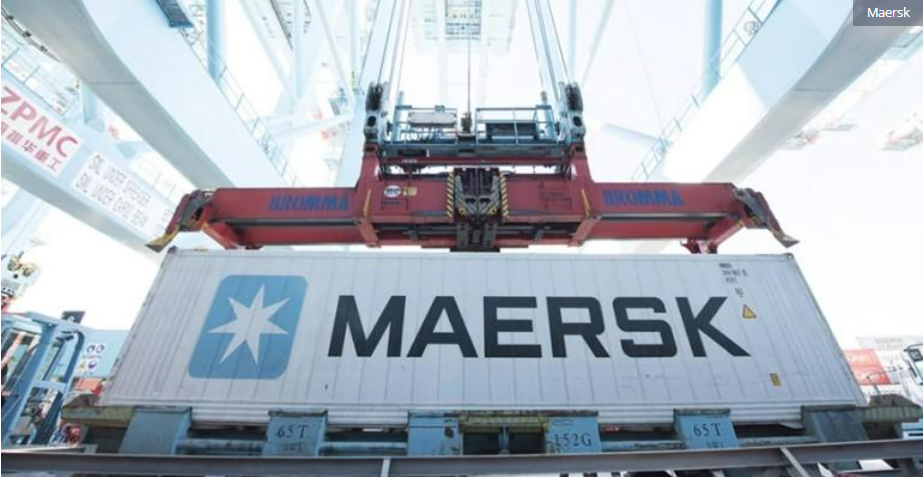
Maersk announced it will extend a 48 hour pause to transits through the Red Sea and Gulf of Aden until further notice following the attack on one of its ships over the weekend. Gary Howard | Jan 02, 2024 “An investigation into the incident is ongoing and we will continue to pause all cargo movement through the area while we further assess the constantly evolving situation. In cases where it makes most sense for our customers, vessels will be rerouted and continue their journey around the Cape of Good Hope,” the January 2 statement said. Over 20 attacks on shipping have been carried out since late November, with attempted hijacking from small boats, missile attacks, and drone attacks all reported by merchant vessels in an area stretching from off the coast of Oman in the Indian Ocean, through the Gulf of Aden and into the Red Sea.
Porto Itapoá will be the first port in Brazil to include carbon credits in its operations
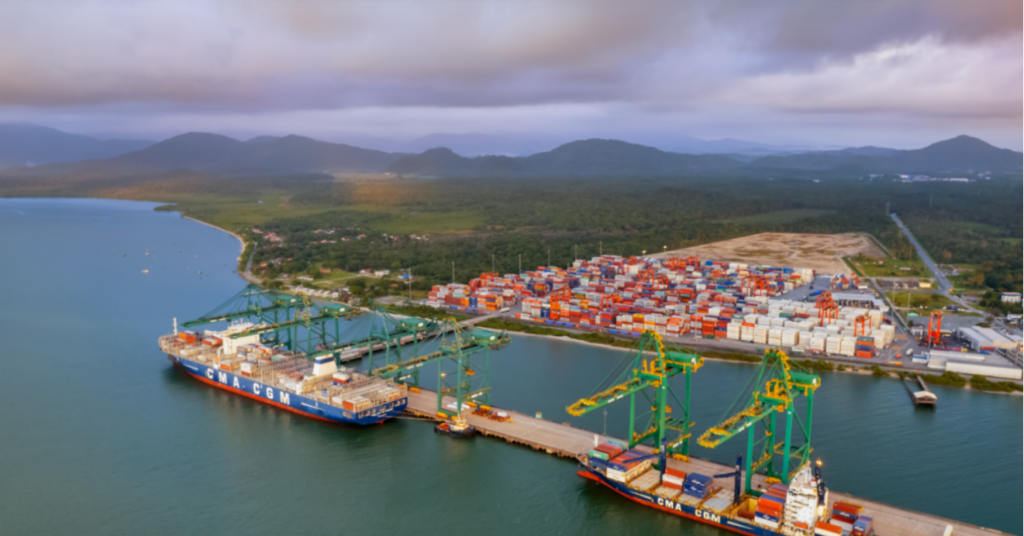
Projects and initiatives reinforce the terminal’s leadership in environmental issues, collecting awards and certifications in the field Porto Itapoá will be the first port in Brazil to include carbon credits in its operations Porto Itapoá has stood out in the business scene, showcasing its commitment to energy transition. An important initiative launched by the company is the Carbon Neutralization Project, in partnership with the Ambipar Group, to offset carbon emissions from customers. As a result, it will be the first port in Brazil to enable the inclusion of carbon credits in its operations. The project officially starts in 2024 and will allow terminal customers to purchase carbon credits to offset their emissions, says Sergni Pessoa Rosa Jr., the director of Operations, Technology, and Environment at Porto Itapoá. “These credits, derived from forest conservation or reforestation, are certified by Ambipar,” he explains. nBy pioneering the carbon credit market, Porto Itapoá offers a new possibility that is expected to impact the entire logistics chain. New energy policy In 2023, Porto Itapoá changed its energy acquisition policy in the national system, opting to consume only renewable energy in new contracts. The transaction is certified by I-REC(e), a global tracking system for renewable energy attributes designed to facilitate reliable accounting of renewable energy attributed to the consumer. Pilot project Porto Itapoá is also developing a solar energy capture project, with panels already installed for a specific study of solar light incidence in Itapoá. “The data we have available today relates to the macro region where we are located, so we need to better understand the specificities of this energy source in our municipality,” emphasizes the terminal director. “These data will serve as a basis for future projects, not only for Porto Itapoá but for all entrepreneurs in the city,” concludes Rosa Jr. Gold Seal The port achieved, for the second time in 2023, the Gold Seal of the GHG Protocol, a program implemented in Brazil by the Center for Sustainability Studies at the Getúlio Vargas Foundation (FGVces) in partnership with the Ministry of the Environment. Additionally, it invested over R$ 25 million in new autonomous RTGs – the first terminal in South America to operate them – which consume up to three times less fuel than conventional ones. Playing a significant role in reducing carbon emissions is an essential premise of Porto Itapoá, according to its director of Operations, Technology, and Environment, Sergni Pessoa Rosa Jr. “Economic development associated with socio-environmental development is the most sustainable way for a company to establish itself. In this way, all stakeholders can coexist harmoniously in a healthy environment,” reflects Rosa Jr. Desempenhar um papel significativo na redução de emissões de carbono é uma premissa essencial do Porto Itapoá, de acordo com seu diretor de Operações, Tecnologia e Meio Ambiente, Sergni Pessoa Rosa Jr. “O desenvolvimento econômico associado ao desenvolvimento socioambiental é a forma mais sustentável de uma empresa se estabelecer. Desa forma, todos os públicos envolvidos podem coexistir de forma harmônica em um ambiente saudável”, reflete Rosa Jr.
A Golden Age Is Emerging for Green Energy

As digital technology becomes ever more complex and widespread, it draws a lot of power. Fortunately, new technologies are making clean electricity production cheaper than ever before. Renewable energy, batteries and multi-directional grids will be the future of energy. BY STEVE WESTLY JANUARY 01, 2024 We live in a world of search engines, video games and e-commerce. Every product and piece of information is at our fingertips. This is stimulating an explosion of data centers where the hardware that makes all this possible operates. These centers draw almost unimaginable amounts of power. The power demand isn’t going to slow any time soon. The advent of cryptocurrency and generative AI is creating an exponential rise in demand for more data centers and more electricity. We’re witnessing a revolution in electric cars, trucks and appliances. Electric companies will have to meet the demand while moving us toward a carbon-neutral world. We can do this by taking three key steps. The first step is to accelerate the ongoing revolution in renewable energy. In 2022, 83% of all new energy added globally by utilities was renewable, and renewable energy is expected to surpass coal by 2025. While the accessibility of renewable energy has increased, the better news is that costs continue to decrease. Solar manufacturing costs drop every year and will only get more competitive with fossil fuels. Via the National Renewable Energy Laboratory | www.nrel.gov Wind projects have decreased in costs by 40% over the last decade. The Inflation Reduction Act is an essential step in the right direction with an estimated $1.2 trillion in incentives for clean technology by 2032. Clean energy is not only better for the planet, it’s becoming cheaper by the day. Unfortunately, the sun doesn’t always shine, and the wind doesn’t always blow. That’s why advancing battery storage is a key bridge to a clean energy future. When I served on the board of Tesla in 2010, the energy cost for batteries was over $1,100 per kilowatt-hour. This was part of why electric vehicles were prohibitively expensive. Just ten years later, the cost of battery storage had dropped by an order of magnitude to $137 per kilowatt-hour. Tesla has cut electric vehicle prices five times in 2023 alone. Battery manufacturers are driving decreases in battery costs that are leading to a revolution in power storage. Tesla’s energy/battery division is a prime example, deploying 3.98 gigawatt hours of power storage in the third quarter of 2023 alone. That’s enough to power all the homes in Chicago and LA combined. Expect to see some form of battery storage in most homes, offices and schools in the coming decades. Batteries are rapidly becoming a cheaper alternative to natural gas or nuclear, and they are a lot easier to permit next to a school or apartment building. The toughest problem to solve will be building a resilient, multi-directional grid that will connect this new mosaic of storage and energy devices. This new grid will enable utilities and homeowners alike to generate power and store it when the wind is blowing and the sun is shining, as well as to transport it to the areas that need it the most based on the time of day. This will enable us to avoid building excess capacity and help us solve for those critical times of peak energy demand (both winter and summer) by saving up power when it’s cheap and using it during peak demand.
New Technologies and Responsible Management Can Solve California’s Water Crisis

JANUARY 02, 2024 Despite historic rainfalls last winter, California could be back into drought conditions before we know it. If we are not careful, we could end up like South Africa. In 2018, Cape Town’s reservoirs were dangerously low. Although authorities severely limited water usage, the city barely avoided “Day Zero.” This would have meant shutting off water to private homes, forcing residents to queue for water rations. Why such a water shortage? South Africa’s water system is crumbling. The system loses 70 million liters of water each day due to leaks. Like South Africa’s, California’s water infrastructure is outdated and in need of repair. California’s reservoirs are largely full now, but there is only enough water for the state to make it through one dry year. To avoid an outcome like Cape Town’s, California needs to start using new technology and smart public policy to ensure the state has enough water. Managing California’s watersheds Watershed management will be key to ensuring water from rainfall and snowmelt finds its way to reservoirs, lakes and rivers. Restoring meadows and forests impacted by pollution, development and wildfires will allow for slower release of rainwater and snowmelt. This increases the environment’s ability to hold water. California’s Sierra Nevada mountains hold a lot of fresh water in their snowpack. The Sierra Nevada Watershed provides drinking water to two-thirds of the state’s population, but the snowpack is under threat from rising temperatures. The state has was lucky this summer, receiving relatively cool temperatures that left the snow intact. Because California’s watersheds are degraded, they are not able to withstand a great amount of meltwater, so higher temperatures could have caused catastrophic flooding. At the same time, billions of gallons of badly needed fresh water would have been lost. We may not be so lucky next year, so we need to act quickly. Nonprofits like the Sierra Nevada Conservancy provide grants for watershed management projects including fire mitigation and land conservation. The state should follow their lead and invest in similar restorations now. In addition, new, strategically-placed reservoirs like the proposed Alder Creek Reservoir could be game-changers. This proposal would see the reservoir located in higher elevation to better catch snowpack melt and upstream so water would not have to ever be released to prevent risks of flooding. California should also invest more in below-ground water storage. Previous projects have seen substantial results. In 2016, Los Angeles Mayor Eric Garcetti broke ground on the largest underground reservoir in the western US, called the Headworks Reservoir. Since completion, it has stored over 110 million gallons of water for LA and helped the city meet state quality levels. In January 2023, LA received heavy winter rains. The Headworks Reservoir and the newly expanded Tujunga Spreading Grounds rose to the occasion and helped to capture the stormwaters. In fact, the Tujunga Spreading Grounds can capture enough water to supply 64,000 households per year. Below-ground water storage contributes immensely to our elastic water supply. Its ability to adapt with the constant ebb and flow of water supply makes it a vital solution to the state’s water scarcity. Using our water resources more efficiently Along with capturing more water, we can leverage new technologies to make more efficient use of the water that we have. Advanced water recycling, or direct potable reuse (DPR), could save enough water for 2 million Californian households. Currently, wastewater is treated and then dumped into the rivers and ocean — 400 gallons a day in Los Angeles County alone. As climate change alters rain and snowmelt patterns, this water becomes less likely to find its way back to reservoirs and aquifers. With DPR, wastewater is highly treated and purified to meet drinking water standards before being introduced directly into public water systems. Recycled water from a DPR system is considered the cleanest drinking water available. Texas, Arizona, and Colorado are already using DPR systems in drought-stricken cities. The State Water Resources Control Board should do the same in California especially in areas hardest hit by drought. New technologies can also help us efficiently transport water. Using renewable power, we can move water across the state at low cost.
Shipping starts shelling out for EU Allowances
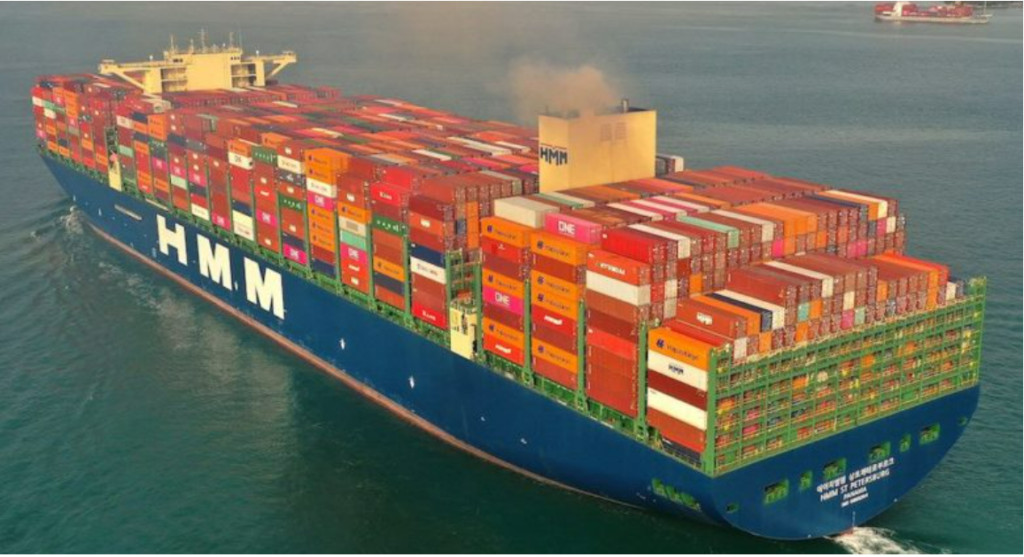
Shipping starts shelling out for EU Allowances January 2, 2024 Piet Sinke / Maasmond Maritime The largest regional green regulations in the history of shipping came into effect yesterday with the industry included in the European Union’s emissions trading system ( EUETS), a market-based measure that sets a cap on allowed emissions. From yesterday, vessels visiting EU ports will be required to offset their applicable CO2 voyage emissions through the purchase of an equivalent number of EU Allowances (EUAs). Clarksons Research has put together a graph estimating EU ETS costs for certain ship types on the basis of this year’s average EUA price of $90 per tonne of CO2 and 2022 trading patterns. The data shows that for a VLCC heading from Ras Tanura to Rotterdam EU ETS costs will be around $200,000 per voyage next year equivalent to 4% of today’s freight cost, increasing to $0.5m and 10% in 2026 when the regulation is fully phased in at 100%. The new regulations were branded as “bullshit” and “a complete waste of effort” by one of Greece’s largest shipowners, George Procopiou, while speaking at an event in Cyprus in October. “We always go to the shipyard, and we try to improve — through air lubrication and new engines, for example. Although our ships are 11 years old, we order a huge number of assets because the new models are 35% or 40% better in consumption. These are the little steps. The rest is just bullshit,” Procopiou said.
Maersk Broker to rebrand as MB Shipbrokers in management buyout.
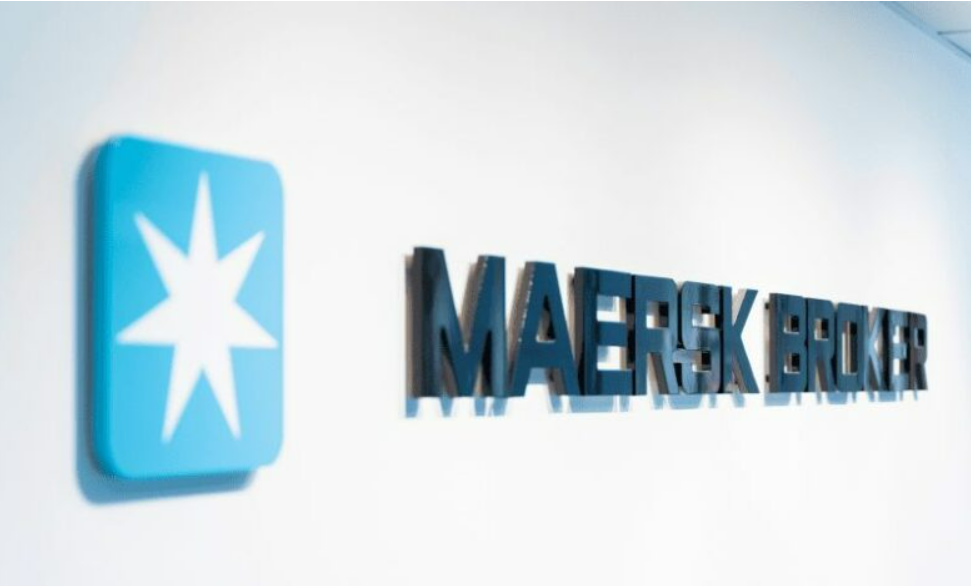
January 1, 2024 Maersk Broker has completed a management and employee buyout from its long-standing owners, the Mc-Kinney Møller family. The Copenhagen-based ship brokerage, established in 1914, will continue to operate under its new name, MB Shipbrokers. “The change of ownership is based on a common ambition of the seller and the buyer to preserve the more than 100 years legacy and to secure the company’s position long-term, under a new name with a new ownership structure,” Maersk Broker said on social media. Although the transaction details have not been disclosed, the move has ended earlier Clarksons takeover speculations. No operational changes are expected, as it should be “business as usual in all aspects,” the company added. Commenting on the buyout, Kristian Mørch, chairman of Maersk Broker, said: “The owners and the board of directors have for some time explored different ownership structures to ensure the company remains strongly positioned for the future. Acknowledging the unwavering commitment of the management and employees to preserve the legacy and values that have been the foundation for Maersk Broker’s success for generations, we believe they are the right owners to ensure the continued success of the company in decades to come.” The brokerage has been privately owned by the Mc-Kinney Møller family since its foundation. Today, the outfit has offices in all major shipping hubs and employs nearly 250 people.
Shipping lines shrink bunker surcharges as marine fuel prices correct
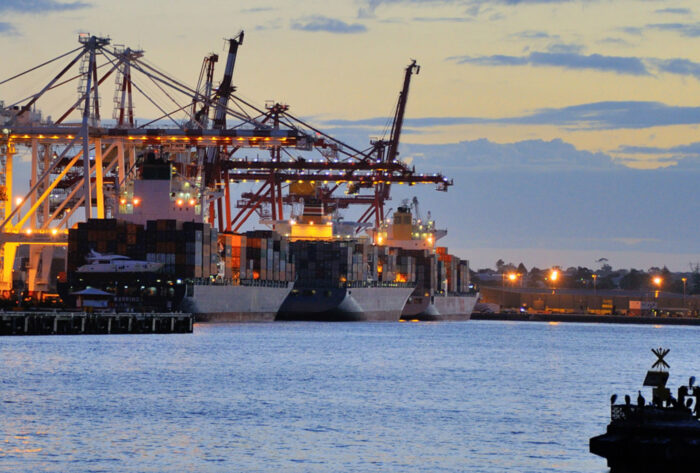
Mainline operators are cutting bunker surcharges in view of the sharp decline in marine fuel prices over the past six months, according to Alphaliner’s latest report, released on 14 June. Although bunker expenses were highlighted by some carriers as a cost factor in 2023 first quarter results, marine fuel prices have been on a steady decline since mid-2022, and are expected to fall further. In Rotterdam, prices of heavy-sulphur fuel oil stood at US$454 per tonne in early June, down from US$642 per tonne a year ago. Prices of very low sulphur fuel oil in the Dutch port averaged US$545 per tonne, falling from US$963 per tonne in June 2022. Concerns over petroleum demand, amid calls to achieve carbon neutrality in 2050, have pulled oil prices down. German carrier Hapag-Lloyd highlighted higher bunker expenses in Q1 2023, which were up 7.5% year-on-year for the line but that is expected to change over the year. In its 2023 earnings guidance, Hapag-Lloyd predicts a ’clear decrease’ in fuel prices in 2023 after the average US$753 per tonne paid in 2022. Maersk also reported a 2.3% year-on-year increase in average bunker costs in Q1 2023 to US$625 per tonne, partially offset by an 11% drop in consumption. However, Maersk and Hapag-Lloyd have reduced their bunker surcharges for April to June, and again for July to September. Maersk has set its Bunker Adjustment Factor (BAF) on the Far East to US East Coast route at US$842 per TEU effective from 1 July, down from US$889 in the current period. Hapag-Lloyd has reduced its marine fuel recovery charge to US$397 per TEU for 3Q 2023, down from the current charge of US$441 per TEU.
MSC Could Face FMC Civil Penalty Over Tariff’s Congestion Surcharge
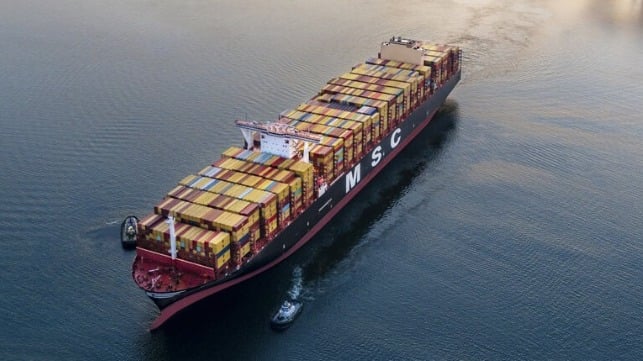
The Federal Maritime Commission is continuing to move aggressively against what it sees as unreasonable charges and business practices of the major carriers. In a filing dated last week, the Office of Enforcement is recommending that the commission review the tariffs of Mediterranean Shipping Company (MSC) for a possible civil penalty related to its insistence on continuing to maintain an “ambiguous surcharge” in its tariff for congestion. The effort seeking to impose a civil penalty comes from what appeared to be an innocuous case over a $1,000 congestion fee issued by MSC to a shipper. The carrier recently refunded the charge, but the FMC’s Office of Enforcement found that the carrier continues to have the questionable clause within its tariff which it sees as a possible violation of the Ocean Shipping Reform Act of 2022. SOFi Paper Products had filed a complaint with the FMC when it was unable to resolve a $1,000 “congestion surcharge,” issued by MSC on a shipment delivered to the Port of Seattle in July 2022. The shipper contended that “MSC neither justified the charge nor explained why the charge was applied.” The FMC reviewed data for the port finding that at that time there were often no vessels waiting and never more than two vessels waiting for a berth. The FMC says that it believes the number of vessels at anchor serves as a “key congestion indicator…Therefore, MSC’s claims of ‘congestion’ as justification for the surcharge appears contrary to facts.” After the FMC issued an “Order to Show Cause,” MSC sent a check refunding the charges in full to SOFi. The company cashed the check on March 6, 2023. The Office of Enforcement considers this matter closed saying it does not propose any further relief for the complainant. Reviewing MSC tariffs, however, they are recommending that the commission determine whether the charge was noncompliant and where a civil penalty should be issued. They raise the possibility that similar surcharges may have been levied on other customers. “MSC’s insistence on actively maintaining in its tariff the congestion surcharge is at the heart of this proceeding.” The FMC has recently taken an aggressive stance against a series of tariffs and fees historically charged by the carriers and which the reform act specifically targeted. As part of its efforts to implement the elements of the act, the FMC last month sent a request for information to large carriers to confirm that they had amended the policies for detention and demurrage (D&D) fees. The FMC is contacting the 11 largest ocean carriers calling the United States to confirm these shipping lines are adjusting their D&D practices after it ordered Evergreen to “cease and desist from imposing per diem charges when imposition of per diem charges does not serve its incentivizing purposes, such as when empty equipment cannot be returned on weekends, holidays, and port closures.”
Import Volumes Climbing at US Ports but Projected Below Pandemic Peaks
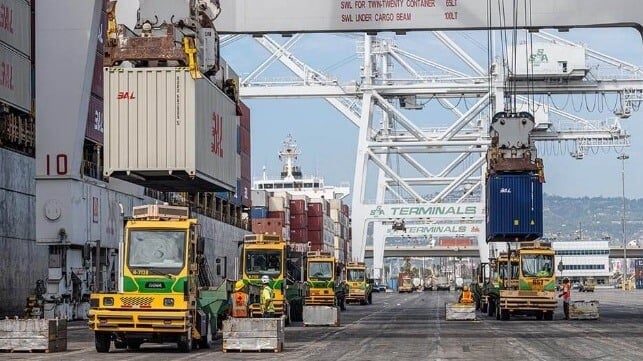
Import cargo volume at the U.S.’s major container ports is expected to start a steady climb lasting into the summer of 2023 but will remain below record-setting levels seen during most of the pandemic, according to the Global Port Tracker report released today by the National Retail Federation. The retail trade association believes that container volumes bottomed out in February and will rise slowly over the next five months through August as retailers slowly grow inventories in preparation for the traditionally busy end of summer and holiday season sales. “Last spring and summer were the busiest ever as consumers spent freely and retailers brought in merchandise to meet demand,” said Jonathan Gold, the NRF’s Vice President for Supply Chain and Customs Policy. “This year won’t repeat that, but the numbers we’re expecting would have been considered normal before the pandemic. The priority at the moment is resolving labor negotiations at the West Coast ports and avoiding any self-inflicted supply chain challenges on top of those we’ve faced the past three years.” The NRF’s statements came as the ports of Los Angeles and Long Beach came to a halt during Thursday’s evening shift and again on Friday as ILWU Local 13 members who operate the cranes and cargo-handling equipment failed to report for work. The NRF highlights that it sent a letter signed by 238 national, state, and local trade associations to President Biden encouraging further engagement by the administration in the West Coast talks. In addition, NRF President and CEO Matt Shay met with Port of Los Angeles Executive Director Gene Seroka to hear the latest developments regarding the status of negotiations. Seroka has publicly said that he believes shippers are diverting volume away from the West Coast and that it is critical to quickly complete the negotiations. The Biden administration has been closely monitoring the talks regularly in contact with the Pacific Maritime Association, which represents the employers, and the union. A prolonged disruption it is feared could step back the expected growth in container volumes projected for the coming months. The NRF in its report notes that February, which is traditionally a slow month, was at levels last seen in May 2020. February’s container volume at 1.55 million TEU was down more than 14 percent from January and nearly 27 percent year-over-year. “Compared with last year, the flow of import containers on the West Coast continues to decline along with demand as carriers increasingly drop service to Los Angeles-area ports but stretch voyages to include other ports of call to help absorb excess capacity,” said Ben Hackett founder of Hackett Associates. “Meanwhile, freight rates have been impacted by the fall in demand, but new ships are starting to show up and more have been ordered – a sign that carriers expect demand will improve by the time the new vessels are delivered.” The NRF expects that monthly container volumes will remain below 2022’s peak levels but rise month-over-month. When March’s volumes are tallied, they project it will come in at 1.68 million TEU which would be down 28 percent from last year. However, they project it will rise surpassing the 2 million TEU level in July and August. The first half of 2023 is forecast at 10.8 million TEU, down 20 percent from the first half of 2022. Imports for all of 2022 totaled 25.5 million TEU, down just over one percent from the record of 25.8 million TEU set in 2021.
China’s Overseas Ports Acquisition Program
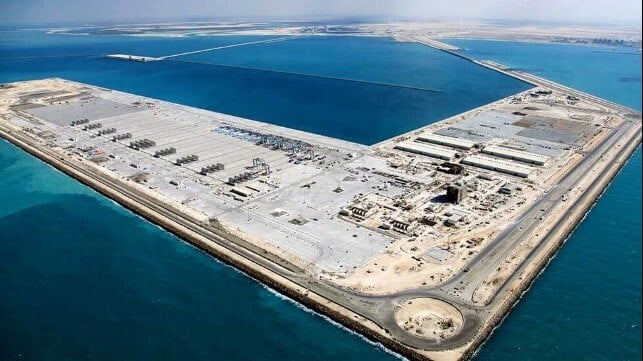
China is a powerhouse in global trade. Its rapid growth has been significantly fuelled by decades of rising exports, bringing new emphasis to the role ports play in trade and strategic relations. As the main arteries of global trade, economic entry points, and nodes of geostrategic power projection, ports are key to global and regional economies, connecting land and sea. In recent years, increasing Chinese investments in foreign ports have attracted media attention. The concentration of these highly strategic investments has lent legitimacy to fears that the means of global trade, once decentralised, have been slowly accumulating in a handful of Chinese state-owned enterprises (SOEs). According to researchers from the United States Naval War College and Indiana University, Chinese and Hong Kong-based companies own or operate (in terminal leases or concessions) more than 90 ports in 53 countries. Other estimates suggest that China has investments or similar arrangements in over 100 ports with at least one in every continent except Antarctica. China’s overseas investments in ports Most of the port investments are along the National Development and Reform Commission’s three “blue economic passages.” The first passage links China to the Indian Ocean, Africa, and the Mediterranean; the second passage links China to Australia and the Southern Pacific; and the third passage links China to Europe via the Arctic Ocean. The main Chinese investors in overseas ports and terminals are SOEs – prized national conglomerates with direct links to and controls within the Communist Party apparatus. One of the largest Chinese SOE investors in foreign ports is China Shipping Corporation (COSCO), the world’s largest terminal operator. Most of its port investments can be found in developed countries and along major global shipping routes. China Merchants Group (CMG), China’s other major port investor, by contrast has invested in emerging markets. According to a 2020 Nikkei Asia report, between 2010 and 2019, Chinese companies, like COSCO and CMG, invested in 25 port projects in 18 countries, spending almost US$11 billion overseas. Security concerns These investments have raised concerns over Beijing’s potential to dominate international shipping and its concomitant ability to influence, and even control, important sea lanes and energy supply routes. This is alongside China’s overseas acquisitions of resources (such as water), technology, and infrastructure. The Nikkei report noted that investments in foreign ports by Chinese SOEs have allowed China to gain access to strategic maritime hubs as part of the Belt and Road Initiative’s 21st century Maritime Silk Road, an “aggressive investment campaign that has raised concerns about Beijing’s growing clout across the world.” Recently, the expansion of Beijing’s footprint at Khalifa Port (UAE), ownership stake in a fuels storage terminal at the Port of Fujairah (UAE), and investments in the Duqm Port in Oman have further stoked fears of what this centralisation of Chinese power and presence in the Middle East means, particularly near the Strait of Hormuz, an importat global chokepoint. In response, various governments have sought to block Chinese companies from gaining ownership or majority stakes in terminals and ports. This includes the US, but also Bangladesh, which cancelled a contract with China to build a deep-sea port at Sonadia in 2016, believed to be due to pressure from the US and India. Meanwhile, Canberra has said it would review the 2015 grant of a 99-year lease of the Port of Darwin to the local unit of a Chinese SOE. Concerns in the West There are three main concerns in the West regarding investments in foreign ports by Chinese SOEs. The first is that these investments could give Beijing access to sensitive or classified information through surveillance (such as tracking the movements of communications and ships), spying, and data gathering capabilities. Recently, in Israel, the management of a new private seaport at Haifa by Shanghai International Port Group was raised in the U.S. The Haifa naval base regularly hosts American warships, and the U.S. is concerned that the port operator could easily monitor U.S. ship movements, have access to equipment moving to/from repair sites, as well as supply chain vulnerabilities. The second concern is the obvious influence Beijing can now exert through its many port investments. In Greece, for instance, COSCO has increased its stake in the enormous trans-shipment port of Piraeus to 67 percent. COSCO has also developed rail infrastructure reaching countries like Germany, strengthening China’s growing dominance in commercial maritime and land routes across the eastern Mediterranean. Chinese SOEs already preside over the trans-Mediterranean, commercial maritime artery linking Egyptian ports to the European mainland in Piraeus. The third fear is the potential establishment of logistics centres and even military bases next to the foreign ports its SOEs have acquired. New basing arrangements would make it easier for Beijing to service and sustain a growing blue-water navy. Beijing’s agreement to maintain a military base in Djibouti, near the commercial multi-purpose Chinese-operated Port of Doraleh, and close to the U.S. Navy’s Camp Lemonnier, exacerbates these fears. Challenges and implications China’s interest in foreign ports is driven by national security concerns. The Port of Gwadar in Pakistan offers a good example. Operated by China Overseas Ports, the port’s geostrategic location (and control) helps China avoid the strategic chokepoint of the Malacca Straight, also referred to China’s “Malacca dilemma.” Given China’s continued reliance on imported energy sources, this remains a geopolitical and geographic concern for Beijing. As around 80 percent of this imported oil and 40 percent of global shipping travels through the Strait. Any disruption to shipments would harm Beijing’s credibility and economic interests. It is worth noting that China does not have a network of bases overseas. Also, ports have not been militarised, and doing so would certainly violate legal norms around territorial sovereignty. As navy vessels are considered offensive state military vessels, they are usually neither welcome nor allowed without state permission to dock in sovereign territory. Furthermore, as far as is publicly known, Chinese SOE investment in overseas port facilities has not come with additional agreements that give certain rights to the Chinese military. Others additionally
